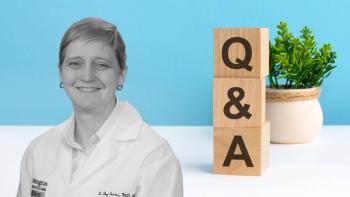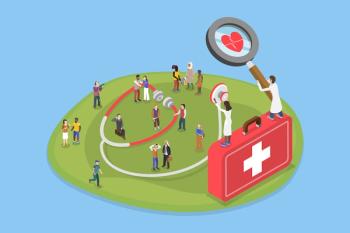
- The American Society of Hematology Annual Meeting, 2014
- Volume 21
- Issue SP1
Results Project Savings for Payers With Novel Oral Anticoagulants
Payers in the United States would see a reduction in overall medical costs if patients switched to newer, novel oral anticoagulants, based on a study of 10 clinical trials involving dabigatran, rivaroxaban, and apixaban.
Results of the study were presented December 6, 2014, at a poster session on health services and outcomes research during the 56th Annual Meeting of the American Society of Hematology (ASH), which took place at the Moscone Center in San Francisco, California.
The study’s lead author, Alpesh N. Amin, MD, MBA, consults for Bristol- Myers Squibb (BMS) and for Pfizer, joint makers of apixaban. The authors sought to review recent clinical trials for new oral anticoagulants and compare event rates for patients taking these newer therapies for nonvalvular atrial fibrillation (NVAF) and venous thromboembolism (VTE) with those taking standard therapy or placebo.
In this study, the authors started with treatment costs at the 2013 level and adjusted for inflation, with costs projected from 2014 through 2018. Projections were based on a hypothetical health plan of 1 million members, and prevalence of both conditions was derived from published literature. The authors assumed the same usage rate for all 3 newer therapies when making comparisons.
For 2014, a hypothetical health plan of 1 million insured lives would see medical savings of $3 million by using dabigatran, $2.1 million by using rivaroxaban, and $7.3 million by using apixaban for its NVAF patients.
For acute VTE, savings were $700,000 for dabigatran, $2.2 million for rivaroxaban, and $4.1 million for apixaban. Savings for the VTE patients for extended periods would be $6.3 million for dabigatran, $6.6 million for rivaroxaban, and for apixaban, $9.5 million for the 2.5-mg arm and $9.6 million for the 5-mg arm.
In 2014, savings for the combined NVAF and VTE populations are projected to be $10 million with dabigatran, $10.9 million with rivaroxaban, and $21 million with apixaban. Savings from 2015 through 2018 were projected to steadily rise for all 3 therapies, although the greatest savings relative to standard care would come in the earliest years of treatment. The authors recommend confirming the results in real-world settings.1
STUDIES ON SICKLE CELL DISEASE
. Two presentations at the December 6, 2014, poster session concerned sickle cell disease (SCD), which received considerable attention at the 56th ASH Annual Meeting. The first examined patient and caregiver perspectives on adherence to iron chelation therapy (ICT), which is used to manage iron overload in patients with SCD and other anemias who have repeat transfusions. Interviews with 11 patients and 10 caregivers from 6 cities in the United States were coded through a consensus process. Children were not interviewed if they were younger than 9 years.
children got older. Several coping mechanisms were reported, such as efforts to mask the taste. The lead author and all but 1 coauthor are employed by Novartis.
Respondents said reasons for adherence included perceived positive effects of ICT on health and longevity, support from caregivers and clinicians, and an established routine for taking treatment. Reasons for nonadherence included not liking the taste, or aftertaste, or texture of the therapy or its side effects, such as gastrointestinal symptoms. Mealtime restrictions were also an issue. Caregivers said children who had a better understanding of the benefits of treatment had better adherence and that adherence improved as 2
A study based at the University of Wisconsin examined the impact of blood transfusion therapy on the quality of life on children with SCD. A group of 196 children in the Multicenter Silent Infarct Transfusion Trial were divided into 2 groups: those who received at least 18 months or more of transfusion (effectively transfused) and those who received less than 18 months. Parents or guardians completed assessments using the Child Health Questionnaire at baseline, at study exit, or at a neurological event. The group was 43% female with a mean age of 9.55 years, and 92% were African American. The groups were equal by gender, disease severity, and rates of pain. At study exit, results showed that children in the effectively transfused group had higher scores in the following areas:
• physical function (M = 12.68; SE = 3.52), t (174) = 3.61, P ≤.001;
• bodily pain (M = 13.16, SE = 3.74), t (174) = 3.51, P ≤.001;
• change in health (M = 0.39; SE = 0.14), t (166) = 2.71, P =.01.3
The authors described these results as the first evidence that blood transfusion improves health-related quality of life for children with SCD. Mast Therapeutics provided research funding for the study. EBO
References
1. Amin, AN, Bruno A, Trocio J, Lin J, Lingohr-Smith M. Comparison of medical costs avoided when new oral anticoagulants are used for the treatment of patients with atrial fibrillation and venous thromboembolism in the US. Blood. 2014;124(21):poster 2181.
2. Bal V, Cote I, Lasch K, Huang V. Patient and caregivers perspectives of factors associated with adherence to and satisfaction with iron chelation therapy. Blood. 2014;124(21):poster 2166.
3. Beverung LM, Strouse JJ, Hulbert ML, et al. Health-related quality of life in children with sickle cell disease: impact of blood transfusion therapy. Blood. 2014;124(21):poster 2167.
Articles in this issue
almost 11 years ago
Improved Cancer Care Through Innovationalmost 11 years ago
Payers Look to CER for Improved Healthcare Decisionsalmost 11 years ago
SPIRIT 2: Dasatinib Superior to Imatinib in Newly Diagnosed CMLalmost 11 years ago
CML Updates: Defining MMR and Results of the DASISION Trialalmost 11 years ago
Sessions Report Phase 2 Results of Pomalidomide Combinationsalmost 11 years ago
Promising Results for Elotuzumab Presented in Session on Multiple Myelomaalmost 11 years ago
Early Treatment, Monoclonal Antibodies Discussed in Multiple MyelomaNewsletter
Stay ahead of policy, cost, and value—subscribe to AJMC for expert insights at the intersection of clinical care and health economics.














































